A ‘Roundabout’ Worth Getting Stuck In (Review)
Sean Stewart and NIDA showcase powerhouse talent in a light yet engaging experience
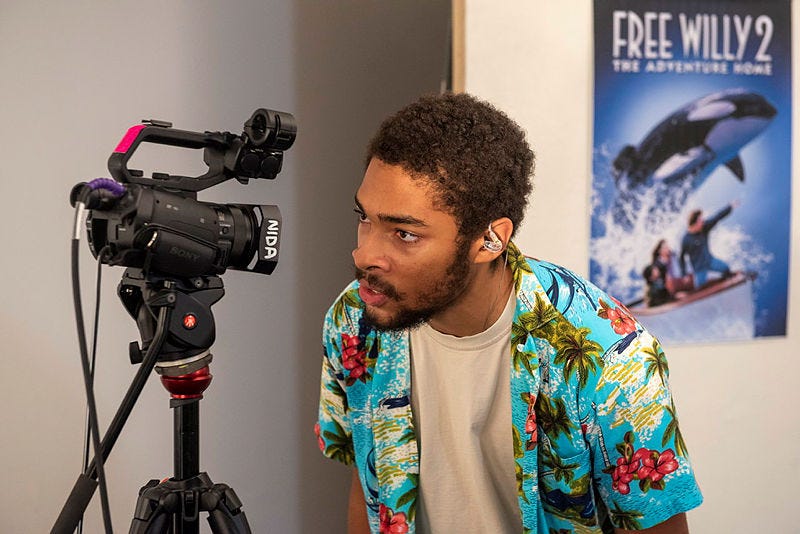

Since the start of the pandemic, live entertainment creators have been scrambling to find the ideal online platform in order to reach their audience. All of them, including immersive theatre creators, seem to have settled on using Zoom despite its flaws. But what if I told you there’s an existing nine year old live-streaming platform allowing performers and their audience to engage with ease?
I present to you: Twitch. You might know it best as the non-YouTube video site where a streaming personality has to apologize for saying highly vulgar and inappropriate comments. While most of its content is watching someone else play video games or live casts of pen-and-paper RPGs, Twitch allows performers to share an experience with an ever growing audience without requiring anyone to be on camera constantly. I imagine it’s this functionality and audience accessibility that drew Sean Stewart and Australia’s National Institute of Dramatic Art (NIDA) into using Twitch for Roundabout. Under Stewart’s leadership, and using NIDA’s resources to showcase the talent of their 2020 graduating class, Roundabout follows a trio of young adults through their ever-deepening romantic entanglements. And while watching the characters’ drama unfold, the audience uses Twitch’s light but dynamic interaction tools to influence Roundabout’s outcome.
Like YouTube, Twitch is adorned with bells and whistles to keep you on their platform, constantly force-feeding their users content. As soon as I reach Roundabout’s homepage, Twitch is recommending ten other channels that have anywhere from one thousand to nearly 50,000 people watching content currently. Since I’m more than capable of making sarcastic comments while getting frustrated playing a video game, I close these windows and sections, freeing up screen space.
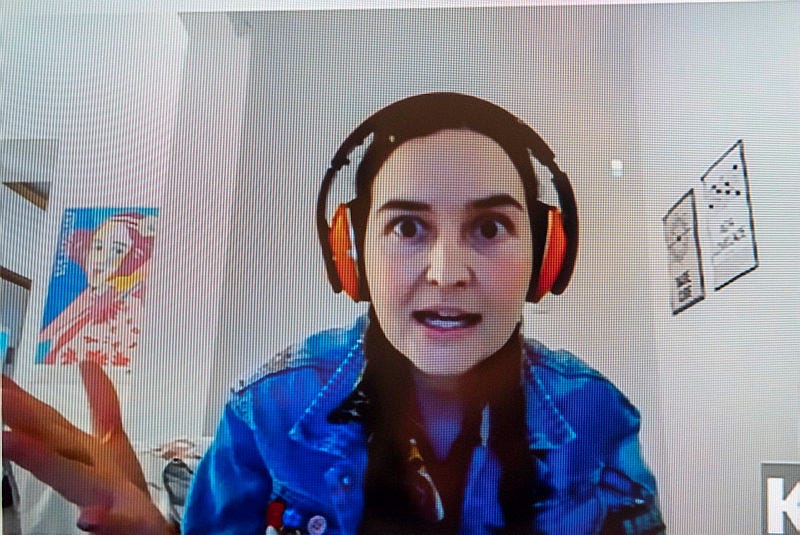
A countdown clock on Roundabout’s stream denotes that showtime is mere minutes away. Underneath the clock are two live feeds, one showing actress Anna Clark, who plays Kit in Roundabout, welcoming people to the stream or responding to chats while out-of-character. The other video displays Roundabout’s massive backstage setup where the crew is hard at work. While the sprawling spacing of the operation is partially due to ensure social distancing, the sheer amount of person-power and hardware on display is impressive. Each crew member is stationed in front of three massive monitors, allowing remote management of the lights, sound, and video at Roundabout’s three different locations simultaneously. (You’d think NIDA was trying to send someone to the Moon.)
When the countdown reaches zero, Clark and the crew fade away as the audience meets Alpha and Omega (the former uncredited and the latter voiced by Rudy Hendrikx), two technological beings who’ve become bored living out their never-ending existence. In their desire to have fun, breaking up the monotony of their lives, Alpha and Omega stumble upon Kit who’s house-sitting for her friend Sam (Rebecca Attanasio) while she’s away doing missionary work. But before leaving, Sam never resolved her complicated relationship status with Pat (Leinad Walker), leaving him unsure if they’re still in a committed relationship — if they were ever at all. This ambiguity leaves Pat to confide in Kit, who is struggling with her own romantic feelings for Sam and conflicted on what advice to give to Pat. If Oscar Wilde were alive today, I think he’d be enthralled by this trio’s drama.
Since the threesome is physically separated, they connect through their computers and phones allowing Alpha and Omega (and the audience) to watch the drama unfold. But you don’t live a never-ending existence without picking up a few omnipotent powers. Alpha and Omega are able to swap places with someone and take over their body through any device’s screen, somewhat like Freaky Friday but with a random stranger. While it’s all fun and games for Alpha and Omega, the body swapping causes the trio’s secrets to be revealed unintentionally and dramatically (along with being confusing if you’re not paying enough attention, but more on that later).
At its core, Roundabout is a Choose Your Own Adventure story performed live. At several key parts, a poll appears right above the chat prompting the audience to pick between one of two options. Not only is making a choice straight and simple, it eliminates those awkward pauses that happen in Zoom as the performer struggles to get a response from the audience or becomes stuck reading the incoming chat messages. Once polling is complete, Roundabout’s crew feeds the result to the performers, with the action moving along seamlessly. While I don’t want every online experience’s choices to be distilled into a either/or poll choice, Roundabout does showcase how audience interaction can be more effectively streamlined in these experiences.
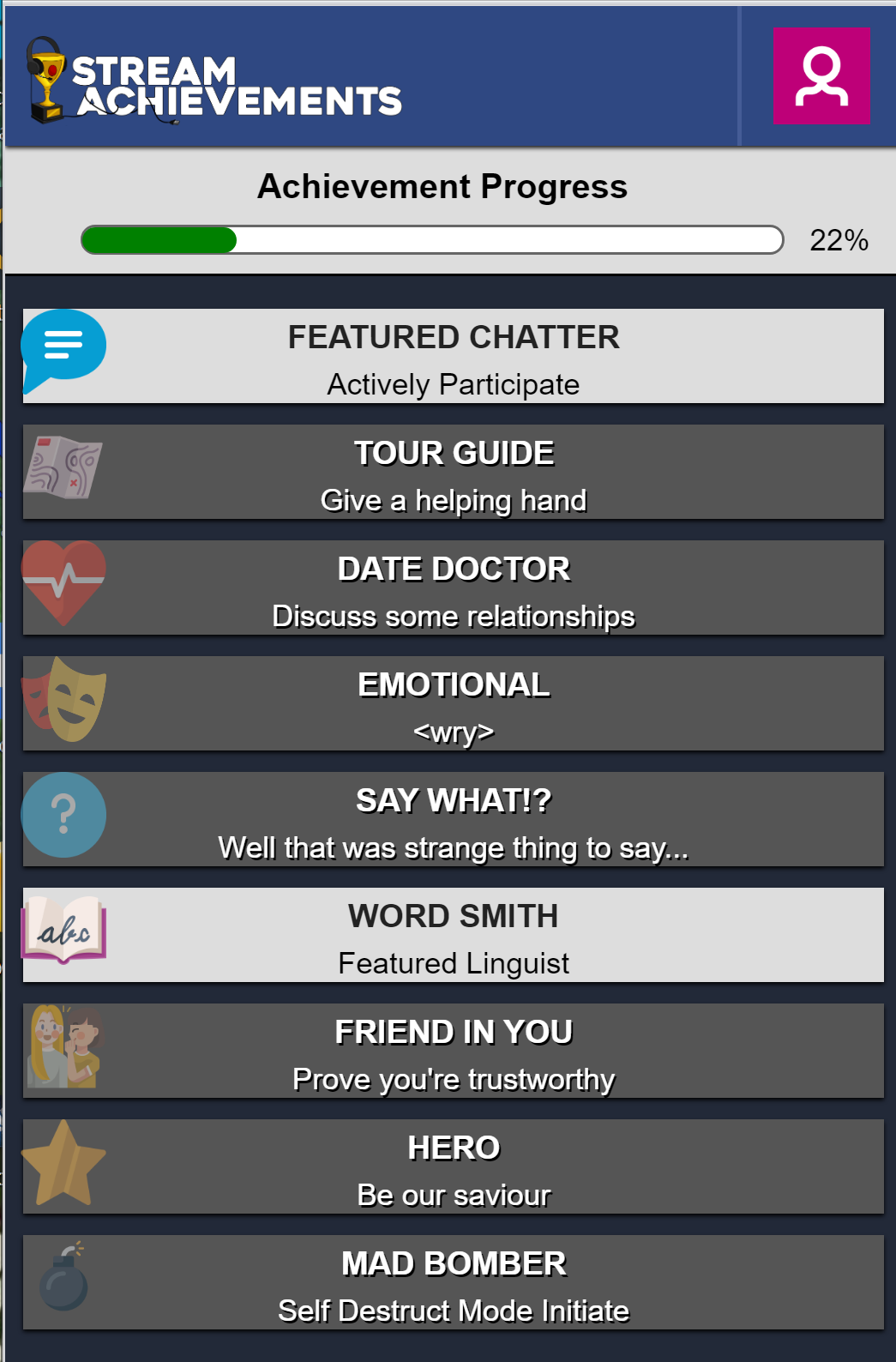
Another Twitch tool Roundabout uses to its advantage is the “Stream Achievements.” Normally Stream Achievements are leveraged to help content creators develop a larger following. But what Roundabout ingeniously does is make them a list of prompts and ways the audience can have agency during the experience. Some of these are pretty straightforward, like actively being involved in the chat. But others like “Hero: Be our saviour” serve to clue the audience into being mindful of specific ways they can become involved — if the moment arises. While it would be too prescriptive in an in-person experience, the list of set achievements is a welcome addition online.
Get Patrick B. McLean’s stories in your inbox
Join Medium for free to get updates from this writer.
SubscribeSubscribe
But Roundabout’s success isn’t completely due to Twitch itself. Clark, Attanasio, and Walker provide some of the most incredible performances I have seen in years. Each has a magnetic intensity that pulls me in, while effortlessly playing off each other as if they’re in the same physical space. But what’s most impressive is the deftness and mastery they display not only over the 350 page script — which requires them to know all six roles they might possibly play — but also how easily and effortlessly they’re able to react to the audience’s comments in the chat.
Spoiler: near the end of the show, a tense moment of life-or-death consequences arises and the audience has to convey important information to the characters to prevent impending doom. My stress level skyrockets watching the characters try to figure out this flurry of information coming at them, the audience realizing they need to provide better context and details if they want the characters to take action. It takes several intense minutes of back and forth but the audience is able to get the characters to take action in preventing a deadly disaster.
Roundabout’s tech crew should be equally applauded. The crew’s management of the constant video cuts and dissolves, unique and specific prop timing, and multiple Twitch polls is executed perfectly and flawlessly throughout the experience. The production level certainly rivals the quality of the last Hollywood blockbuster film I saw in movie theaters. And the crew is broadcasting live from Australia while they remain socially distant! If push came to shove, I bet Roundabout’s crew could put someone on the Moon if they tried.
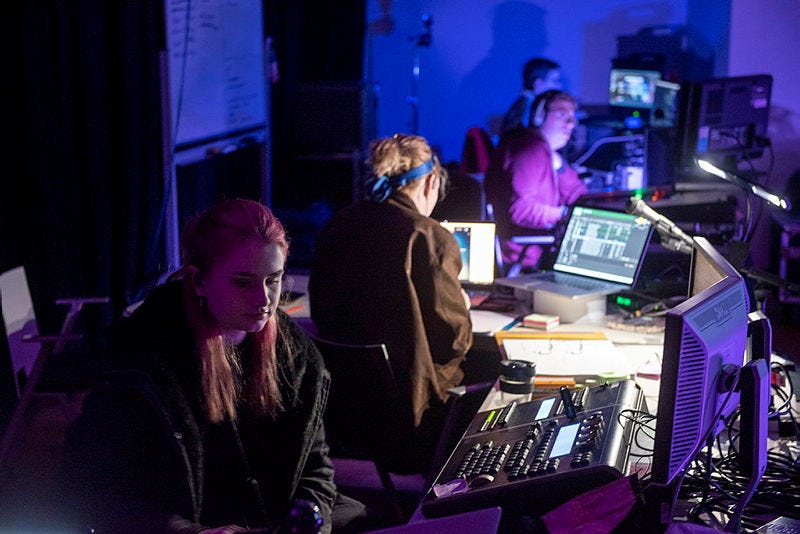
But Roundabout does suffer some of the same problems as any other online interactive show. Roundabout asks the audience to be fully engaged in both the live experience and the chat window. But like any Zoom or Facebook Live-based experience, monitoring the chat window leaves me distracted from what’s happening with the performers. While spending time in the Roundabout’s chat, several times I turned back to the performers and found myself totally lost. Who’s in whose body now and why? Additionally, the chat is used as a catch-all for any communication. One minute it’s being used for character interaction and the next it’s being used as tech support as the crew to respond to stream issues, from the stream cutting out to letting the audience know any audio problems occurring might be on their end.
Furthermore on its limitations, Twitch is more akin to a traditional proscenium space, restricting what we’re allowed to see. Additionally, there’s also no option for the audience to be seen by each other or by the performers. This makes experiencing Roundabout closer to watching the Black Mirror or Unbreakable Kimmy Schmidt’s interactive specials on Netflix than what audiences are growing accustomed to when taking part in an Zoom-based online experience. While each poll heavily dictates the direction of where Roundabout goes on any given night, those moments are few and far in between. For most of Roundabout I sit quietly, passively watching the trio’s triangle of drama unfold, remembering only at the last minute to cast my vote, rather than sitting on the edge of my seat, ready to be involved.
As we progress further into this grand ongoing experiment of online immersive shows, it’s the experiences that are mindful and work within the restrictions of their selected platforms that seem to resonate strongest with audiences. If immersive work is being done online just to be online, how is that different from the play readings traditional theatres are televising that fall flat? If Sean Stewart and NIDA had elected to do Roundabout on Zoom instead of Twitch, they wouldn’t have been able to do half of what they did or do it so seamlessly.
While Twitch limits an unseen audience into binary choices, Roundabout plays into those limitations by making those either/or narrative choices have powerful and lasting consequences, where the smallest choice creates a uniquely different narrative path to be explored. By engaging in the what appears to be the ideal online experience “formula” of crafting the narrative around a platform from the initial idea’s conception with a committed cast and crew, Roundabout creates the first immersive experience I’m desperate to try again and see what occurs when dramatically different choices are made.
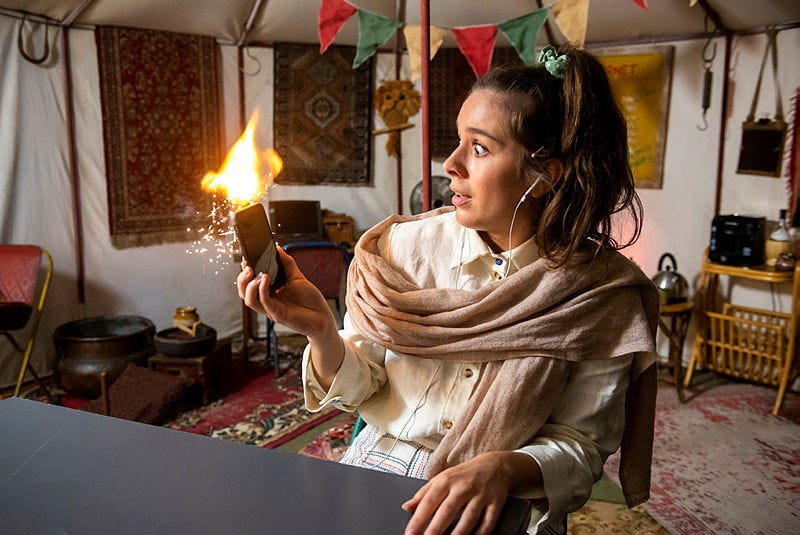
Roundabout has concluded but is available to watch for free until September 20.
NoPro is a labor of love made possible by our generous Patreon backers. Join them today!
In addition to the No Proscenium web site, our podcast, and our newsletters, you can find NoPro on Twitter, Facebook, YouTube, Instagram, in the Facebook community Everything Immersive, and on our Slack forum.
Office facilities provided by Thymele Arts, in Los Angeles, CA.